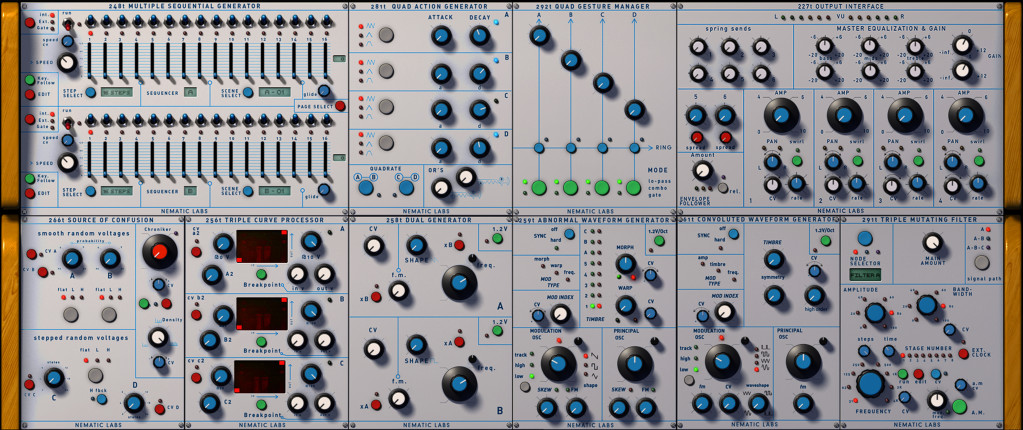West Coast synthesis is yours for a song, by combining a free/donationware download with Reaktor. And now Cloudlab 200t just got a major V2 upgrade.
First, okay – this is not an authorized Buchla product. The Buchla legacy is alive in hardware and software forms. The Buchla Easel got a full-blown remake from Arturia. The Twisted Waveform Generator module has an official remake from Softube – though it’s silly spendy, at US$99. (That’s the price of some actual hardware module kits, or halfway to getting Reaktor!) And of course Buchla the hardware company are back in action with some of the original engineers.
But that’s besides the point: this is in Reaktor. And because it’s in Reaktor, you can pick it apart from the outside in and see how it works. And you can combine it with other Reaktor stuff, and then run the result as a plug-in. That’s something unique – ever wondered what a granular patch would sound like routed through some Buchla effects, for instance?
Does it sound any good? Yes – enough so that colleagues who have spent considerable time on Buchla hardware say they appreciate it. It certainly replicates the control layout and basic ideas of the Buchla, even if it has its own unique sound.
There’s one major downside of Reaktor: all the patching is hidden in the structure. That’s pretty weird if you’re use to patching on the front panel, as on hardware (and software emulations). But it will be familiar to Reaktor users, and it means the control layout on the Buchla is clean – even if there’s some tension behind the way the Buchla was conceived and how it works here.
In version 2, you get some significant updates – starting most importantly with clock sync:
External clock. Any gate in or clock out can be synced to external input, and the 266t Chronikler gets a clock output. Now you can sync to DAWs – or, if you like, stuff like VCV Rack.
Lemur control works both ways. The popular iPad and Android controller app now gets parameters back from Cloudlab, so it responds in realtime.
More noise. Noise sources on the 266t Noise module now include -3 Pink, Flat, and +3 White noise. If this makes you swoon as it does me, then you’re definitely a synth nerd. (Flat is labeled “Buchlesque,” a word I hope to now apply in completely inappropriate situations…)
Easier on the CPU. You’ll still want a hefty processor, but this version promises to be more stable and efficient, says the developer.
More modules. 227t Output interface & 248t Multiple Sequential Generator.
Be sure to make a donation if you like this.
It’s also wonderful to see these ideas spreading. From efforts like this to the rising stardom of people like Kaitlyn Aurelia Smith, it’s now not uncommon to meet aspiring musicians on the street who know the name Buchla. That’s a sea change from a few short years ago, when people might know the name “Moog” (and pronounce in a way that rhymes with a sound a cow makes), and referred to all computer production simply by “Pro Tools.” Now, they’re very likely to start lecturing you on their thoughts on West Coast versus East Coast synthesis or tell you what oscillator module their favorite producer just started raving about.
And that’s relevant here, too. It means Reaktor can help spread the viral interest in esoteric synthesis. And that means Native Instruments customers are likely to want to do more than just dial up presets. And certainly as the Buchla brand and other lesser-known names catch up with the giants like Roland, Moog, and KORG, we’re seeing synth lovers willing to look to hardware and software from a greater variety of models.
I’d say this could be overwhelming, but – I think that ignores the possibilities of sound. Once you dive into the Buchla Way, you may just find yourself … really happy.
Let us know if you make some sounds with this.
Big thanks to the wonderful Synth Anatomy where I saw this first:
Cloudlab 200t V2 Released – A Stunning Buchla Based Modular Synthesizer For Reaktor 6
The gorgeous GUI comes from David Frappaz
Trevor Gavilan, who designed and programmed the ensemble, has also used it to make some of his own music. Here’s something entirely produced in just one instance:
More information and download at the NI Reaktor User Library:
